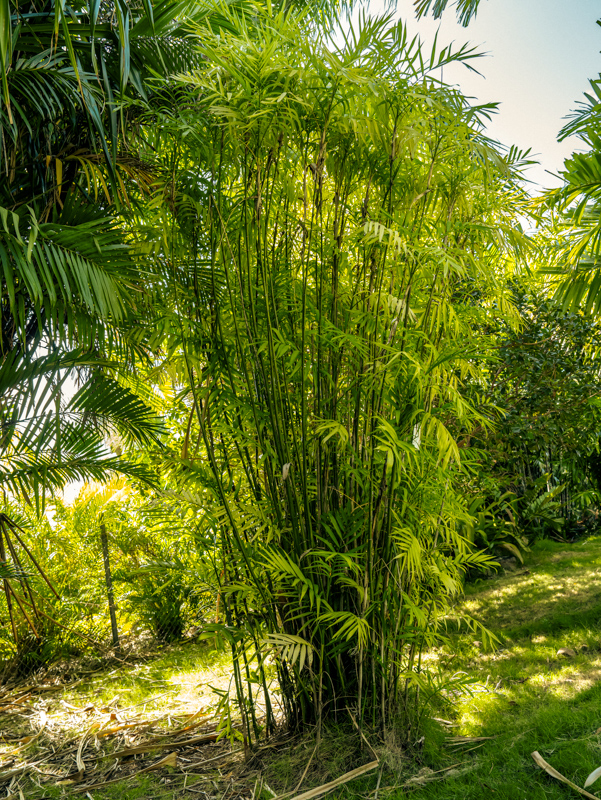Cordyline fruticosa, commonly known as Broadleaf palm lily, Ti Plant or Hawaiian Ti, has several important uses across cultural, ornamental, and practical applications, particularly in tropical regions:
Ornamental Landscaping: Cordyline fruticosa is highly valued for its striking foliage that comes in a variety of colors, including green, red, pink, purple, and variegated shades. It is widely used in gardens, parks, and landscapes as a decorative plant, often planted for its colorful leaves and tropical aesthetic. It thrives both as a container plant and in outdoor landscapes.
Indoor and Patio Plant: Due to its colorful leaves and ability to grow in lower light conditions, Cordyline fruticosa is also popular as an indoor plant. It is often placed in homes, offices, and patios, where it adds a vibrant touch to interior decor.
- Cultural and Spiritual Uses: In Hawaii and other Pacific Island cultures, Cordyline fruticosa is considered a sacred plant with spiritual significance. It is often used in ceremonies and rituals for protection, good luck, and to ward off evil spirits. Ti leaves are used to make leis and are worn during important cultural events.
- Clothing and Wrapping Material: The leaves of the Ti plant are used in many Polynesian cultures to make skirts, hula costumes, and rain capes. The large, durable leaves are also used to wrap food for cooking, such as in Hawaiian luaus where they wrap food for underground cooking in an imu oven.
- Medicinal Uses: In some traditional medicinal practices, parts of Cordyline fruticosa are used to treat various ailments. The leaves and roots are sometimes used to make herbal remedies for conditions like fevers, skin conditions, or digestive issues, although these uses vary by region.
- Food Use: The starchy roots of Cordyline fruticosa can be cooked and eaten. In some Pacific Islands, the roots are fermented or roasted, and they can also be used to make a type of alcoholic beverage.
- Fencing and Boundary Markers: In many Pacific cultures, Cordyline fruticosa is planted as a boundary marker or natural fence around homes, gardens, and ceremonial spaces. Its hardy nature and tall growth make it an ideal plant for this purpose.
- Religious Symbolism: In Hindu culture, Ti plants are considered auspicious and are often planted near homes and temples to bring good luck and prosperity. The plant has a rich symbolism in various religious and cultural contexts around the world.
These uses make Cordyline fruticosa a highly versatile plant, appreciated for its ornamental value, cultural significance, and practical applications in food preparation, medicine, and clothing. Its role in spiritual and ceremonial practices further highlights its importance in many tropical cultures.
Sources:
– Wikipedia
– Useful Tropical Plants Database
– Palmpedia
– Earthone
– Useful Tropical Plants Database
– Chat GPT 4






